
Oromia is a regional state in Ethiopia and the homeland of the Oromo people. The capital of Oromia is Addis Ababa (Finfinne).
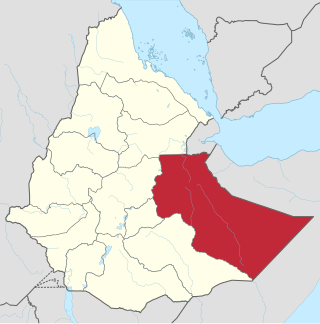
Hararghe was a province of eastern Ethiopia with its capital in Harar.

The People's Democratic Republic of Ethiopia was a socialist state that existed in Ethiopia and present-day Eritrea from 1987 to 1991.
Barento is one of the two major subgroups of the Oromo people, a Cushitic ethnic group. They live in the West Hararghe Zone, East Hararghe Zone, Arsi zone, of the Oromia Region of Ethiopia while the other subgroup named Borana Oromo inhabiting Oromia Special Zone Surrounding Addis Ababa, West Shewa Zone, West Welega Zone and Borena Zone of the Oromia Region of Ethiopia.
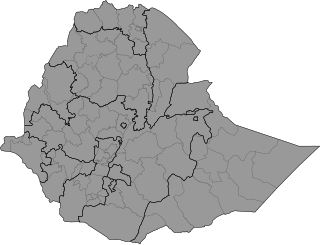
Ethiopia is administratively divided into four levels: regions, zones, woredas (districts) and kebele (wards). The country comprises 12 regions and two city administrations under these regions, plenty of zones, woredas and neighbourhood administration: kebeles. In addition to the Twelve federal states within the country, there are two federal-level city administrations in Addis Ababa and Dire Dava.
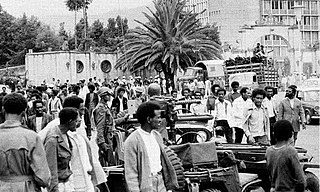
The Ethiopian Civil War was a civil war in Ethiopia and present-day Eritrea, fought between the Ethiopian military junta known as the Derg and Ethiopian-Eritrean anti-government rebels from 12 September 1974 to 28 May 1991.

Ethiopian forces in the Second Italo-Abyssinian War besides the Central Army were mobilized from various provinces under their local leader. According to 1935 Italian intelligence estimates of the Ethiopian provinces and their forces on the eve of hostilities, the Ethiopians had an army of 350,000 men. Strengths where known are noted followed by their leader. Modernized forces in Bold.
Cynthia Tse Kimberlin is an American ethnomusicologist. She is the executive director and publisher of the Music Research Institute and MRI Press, based in Point Richmond, California. Her primary area of expertise is the music of Africa, in particular Ethiopia and Eritrea.

The Warjih, also known as Wargar or Tigri-Warjih, are an ethnic group inhabiting Ethiopia. The prefix for their traditional name, Tigri, comes from the word Tijaari, which is an adjective in the Arabic language that literally translates to "merchant." Their tribal name Warjih is eponymous with the name of their ancestral homeland. Thus, Tigri-Warjih essentially means "merchant of Warjih."
Resettlement and villagization in Ethiopia has been an issue from the late nineteenth century up to the present, due to the overcrowded population of the Ethiopian highlands. As the population of Ethiopia has increased in the twentieth century, the need to move inhabitants has only increased as available cropland per family declined to its current level of less than one hectare per farmer.
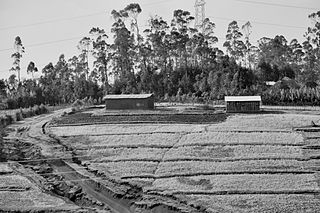
The problem of land reform in Ethiopia has hampered that country's economic development throughout the late 19th and 20th centuries. Attempts to modernize land ownership by giving title either to the peasants who till the soil, or to large-scale farming programs, have been tried under imperial rulers like Emperor Haile Selassie, and under Marxist regimes like the Derg, with mixed results. The present Constitution of Ethiopia, which was put into force January 1995, vests land ownership exclusively "in the State and in the peoples of Ethiopia." The relevant section continues, "Land is a common property of the Nations, Nationalities and Peoples of Ethiopia and shall not be subject to sale or to other means of exchange." Despite these different approaches to land reform, Ethiopia still faces issues of sustainable food self-sufficiency.

The Constitution of the People's Democratic Republic of Ethiopia, also known as the 1987 Constitution of Ethiopia, was the third constitution of Ethiopia, and went into effect on 22 February 1987 after a referendum on 1 February of that year. Its adoption inaugurated the People's Democratic Republic of Ethiopia (PDRE).
The People's Militia was a civil defense paramilitary force in the Provisional Military Government of Socialist Ethiopia and the succeeding People's Democratic Republic of Ethiopia. It was a largely rural organization, under the direction of Addis Ababa. It was frequently armed with more antique weapons, particularly those that were used during the Second Italo-Ethiopian War.

The fall of the Derg, also known as Downfall of the Derg, was a military campaign that resulted in the defeat of the ruling military junta, called the Derg by the rebel coalition Ethiopian People's Revolutionary Democratic Front (EPRDF) on 28 May 1991 in Addis Ababa, ending the Ethiopian Civil War. The Derg took power after deposing Emperor Haile Selassie and the Solomonic dynasty, an imperial dynasty of Ethiopia that began in 1270. The Derg suffered from insurgency with different factions, and separatist rebel groups since their early rule, beginning with the Ethiopian Civil War. The 1983–1985 famine, the Red Terror, and resettlement and villagization made the Derg unpopular with the majority of Ethiopians tending to support insurgent groups like the Tigray People's Liberation Front (TPLF) and Eritrean People's Liberation Front (EPLF).
This list details about chronological aspect of the Derg, the military junta that ruled Ethiopia from 1974 to 1987 by decade.

The Ethiopian Civil War (1974–1991) has costed civilian, infrastructure and agricultural impacts. It left at least 1.4 million people dead, with 1 million related to famine and the remainder from violence and conflicts, which is one third of population.
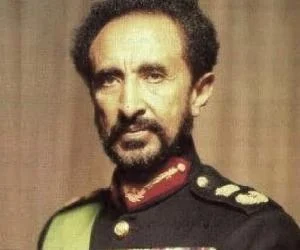
Opposition to Haile Selassie relied largely of internal administration of his country. While Haile Selassie made attempt to modernize the country and brought to global power since Italy's occupation in 1936–41, the later administration met with negative public attitude especially among educated people in universities and peasants.

On 12 September 1974, Emperor Haile Selassie was deposed by the Coordinating Committee of the Armed Forces, Police, and Territorial Army, a Soviet-backed military junta that consequently ruled Ethiopia as the Derg until 28 May 1991.















